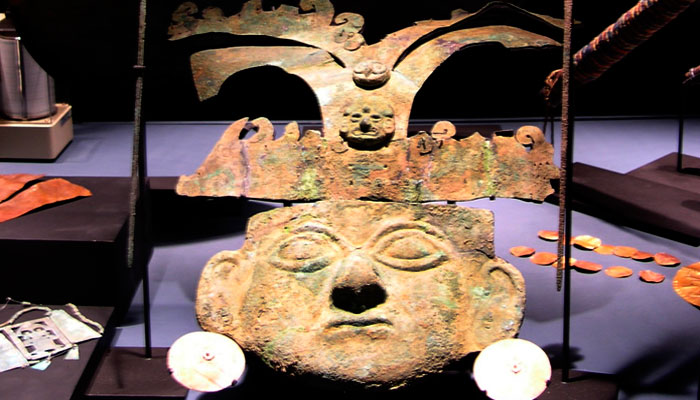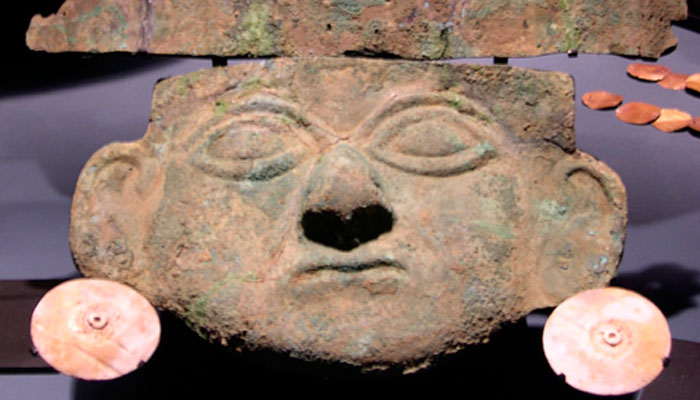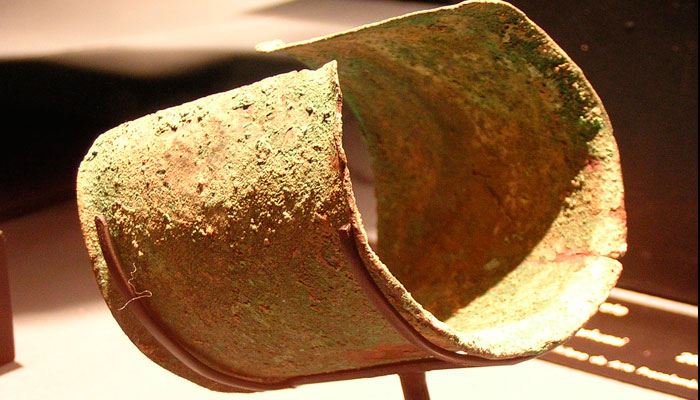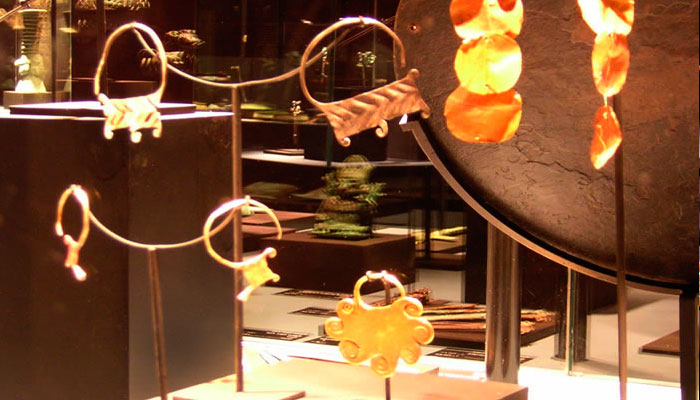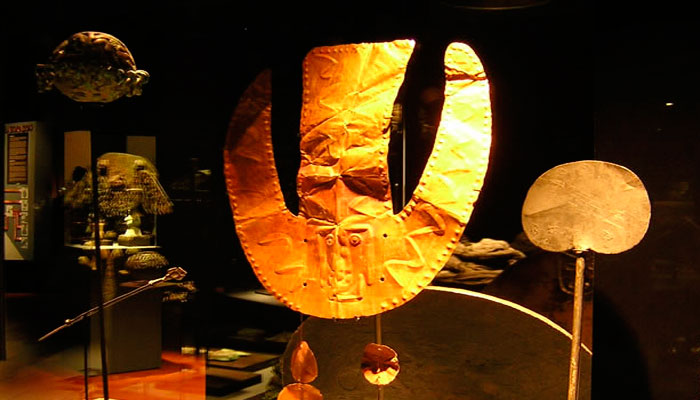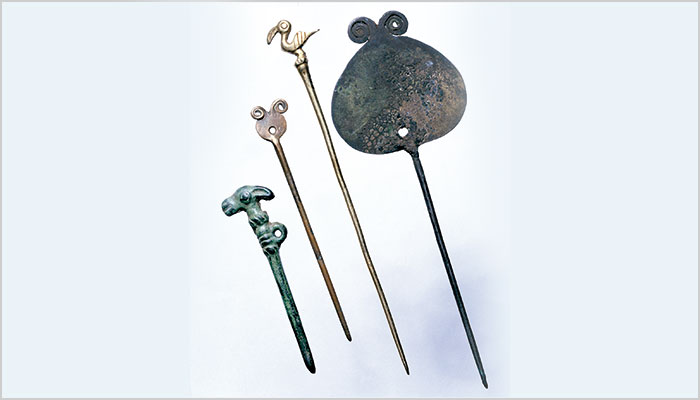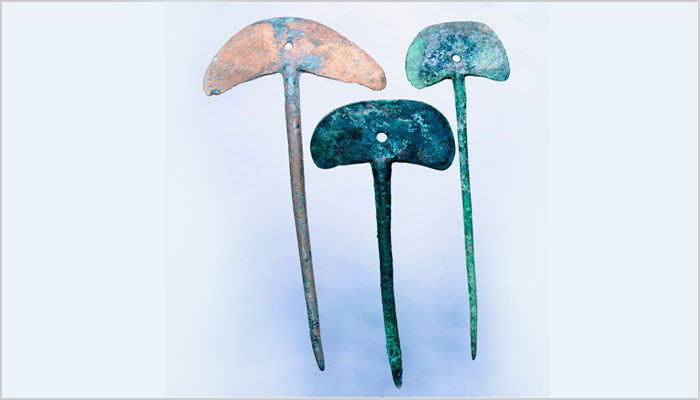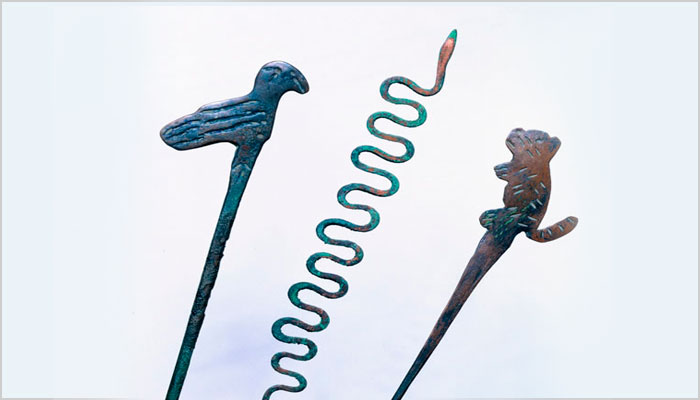The Art of Copper in the Andean World – 2004
- From stone to jewel
- Metal tools
- Chromatic palette of copper
- Metallic sounds and glitters
- Bronze bells
- Metals for taking away life
- Copper on the shaman’s altar
- Copper in the andean iconography
- Metallic bodies
- The face of death
- Food for men
- Food for the gods
- The power of the cailles
- Epilogue
- Galería de fotos
Metallic bodies
Textile art and pre-Hispanic Andean metallurgy share several features. Technically, the study of their internal structures reveals the production process, the technological and material choices that the artisans made, as well as the context in which they were used. Textiles and metals are malleable materials with which sizeable objects were made, by joining and bending parts that are essentially two-dimensional, like woven cloth and metal sheets. Most textile designs and color effects appear after manipulating the structure of their warps and woofs. Similarly during the metal smelting process, the microstructure of different minerals intervenes to bring the desired color to the surface, like those obtained with plating and gilding techniques. Thus, in the social sphere metals, like textiles, were a privileged means of communication, indicating status, hierarchies and privileges of the society’s members, as well as ethnic affiliations, ideology and rituals.
Generally, the most elaborate metallurgical styles and technologies were reserved for the production of ornaments to adorn the body, covering it from head to toe with headdresses, nose rings, earspools, necklaces and breastplates, bracelets and ankle chains. Most of these have been found in tombs, but some bear signs of having been used in life by nobles for important festivities and ceremonies. The symbolic and cultural value of metals was so great that the artisans from Moche, Sicán and Chimú cultures made full metal outfits to clothe their deceased dignitaries and priests, including reproducing their arms, legs and faces with sheets of plated or gilded copper. Over time, the body disappeared but the metal physiognomy of the person was preserved through eternity.




































